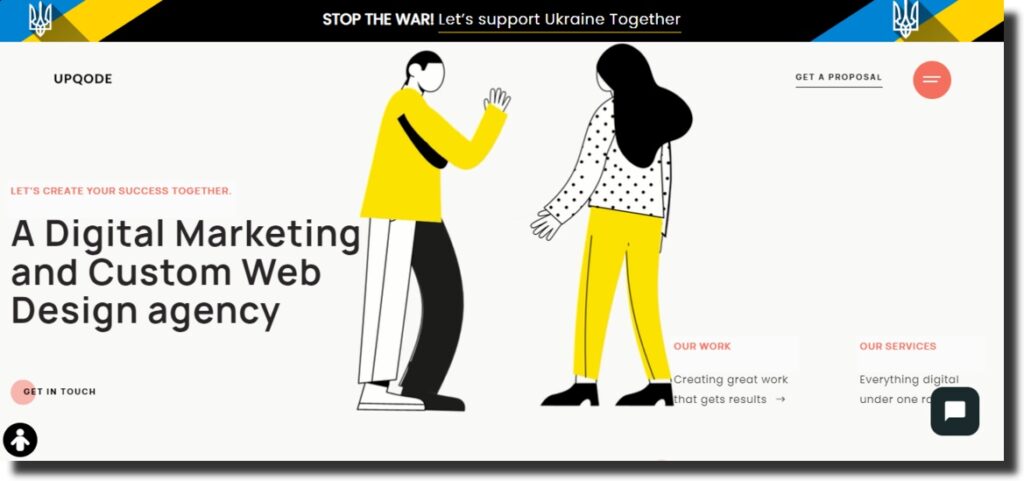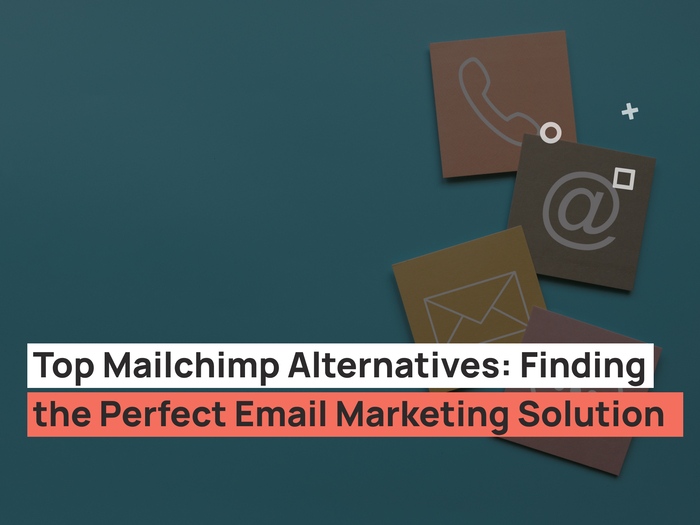Word of mouth works wonders to increase your customer base. A full-blown customer referral program takes this phenomenon to the next level by merging it into your digital marketing strategy in a consumer-centric way.
When was the last time you went to a restaurant because your friend told you their food was amazing or tried out a new product? After all, your colleague wouldn’t stop talking about it. It must have occurred quite recently.
Statistics have shown that 74% of consumers consider word of mouth a key factor in driving their purchase decisions.
Yet, a more surprising stat from the same sources shows that only 33% of businesses actively seek and implement customer referral campaigns in their marketing strategies.
Do you comprehend the impact of an effective referral program and how much you’re missing out on with its absence? Well, by the end of this guide, you will.
Since many of our fellow businessmen and entrepreneurs are constantly looking for innovative and profitable marketing solutions for their enterprises, we are here with another comprehensive guide on creating a referral program with all the information you need to get a head start.
So let’s get into it!
Referral Program Meaning and Methodology
We’ve already explained half of it in the beginning so let’s keep the definition short. Referral program marketing is a systematic way of approaching word-of-mouth advertising by offering incentives to your previous customers in return for their recommendations of your products.
In a sense, it’s an organic marketing strategy to reach more people by asking your previously satisfied and loyal customers to become your brand’s advocates. This strategy also improves customer retention because your loyal customer base will feel personal belonging to your organization.
Two birds with one stone couldn’t be better, right?

The methodology behind referral program marketing is to bring quality leads from quality customers by using a customer lifetime value formula and the following factors to your benefit:
The Logical Appeal
Your product or service targets certain pain points, and customer referrals give rational justifications for them. A real-life example would serve as better proof than any statistics or explanations could ever do.
The Emotional Appeal
People will trust reviews from people with similar experiences. They will feel more driven to make a purchase that adds value to their lives. Humans empathize with other humans before making decisions.
The Social Appeal
If it impresses their friends’ people will advocate more, and the impressed will come to you and buy more. This adds social value to the services or products you provide.
Why Do You Need It? – Referral Program Benefits
Generally, marketing strategies mainly focus on generating as many leads as possible. However, now more than ever, businesses need to change their strategy.
Effective investment is bringing high-quality outcomes with the least possible capital. Generating fresh leads in abundance is essential to digital marketing for small businesses and startups. Still, one good-quality lead will be more beneficial for your brand image.
The solution is to combine these strategies and generate all sorts of leads to serve their specific purposes. As a standalone strategy, a referral program benefits your business in the following ways:
- Micro-targeting the right audience
Customers are the best marketers your business can have. Unlike other marketing services such as PPC and SEM, referral marketing targets a definitive audience that needs your services the most. Your existing clients will be referring your products or services to those in their circle who they know are looking for them.
Like this, you naturally become a more trustable option for these prospective customers to consider. And in most cases, they do.
The thing with referral marketing is that it works for both the digital realm and the real world. Your loyal customers will spread the word not only through their in-person encounters but also through relevant social media channels. A popular example is social media influencers who market products based on the target audience.
Take Maybelline, for example; they reach out to makeup artists, models, dermatologists, and almost everyone in the beauty game who uses their products. The audience for these social media influencers is interested in their recommendations and often buys the products they suggest.
Micro-targeting your leads will eventually cost-effectively bring your more customers, and that’s the second benefit of a referral program.
- More in less
Referral marketing is affordable and delivers a low user acquisition cost. Other means of digital or traditional marketing are way more expensive because they target a wider audience, like in Search Engine Optimization. Most of them have no intention of buying the product being marketed.
There’s also more competition in this sector because you are trying to outbid the alternative brands to increase your outreach. Additionally, all that money you spend involves a greater risk of not achieving the right return on investment (ROI) because it’s just marketing without proof.
In contrast, referral marketing serves as the social proof most people look for before trying out a service. You can blend this into your long-term marketing strategy, and we are sure you won’t be disappointed by the results.
- The law of reciprocity
Let’s get a bit theoretical here. In commerce, it has been a historically successful strategy to leverage your customers, a favor for a favor. You can give your loyal customers a discount or a monetary advantage for acting as your advocates.
In its nature, this strategy makes use of the human conscience. When you offer an exclusive advantage to your loyal customers, they will feel bound to reciprocate it by bringing you more customers and giving you referral business.
Either they will feel emotionally driven to make others gain the same benefit they did with your services or, in a more superficial sense, simply return the favor. Either way it’s the reaction you intend for and the law of reciprocity at its best. We will share a list of creative incentives you can offer your customers ahead, so keep on reading!
- A relevant touchpoint in sales
Even in contemporary marketing, word of mouth and customer reviews remain the most relevant touch point for customers. 88% of people consider feedback and testimonials a trustworthy source to seek assurance before buying a product online.
For e-commerce platforms, adding testimonial content through live comment sections or video reviews to their products page is a rule of thumb. Other initiatives such as the referral program Shopify have also gained popularity for e-commerce businesses to increase their customer base.
- Improved customer retention
Consumers who truly find your products or services helpful wish to reach out to you as an individual in many cases. You can use this for your business growth, give your loyal customers a sense of belonging, and make them feel special by reaching out to them first.
Airbnb’s referral program is the greatest example of incentive-based customer referrals and increased retention. The company’s signups and bookings increased by 300%, and their yearly estimate of first-time bookings increased by 900%!
In addition, people eventually begin to advocate for AirBnb’s services because of their benefits to their loyal customers, such as free account credits for their next stay.
The Incentives You Could Offer – Referral Program Examples
Although we have already started a few successful referral program examples, you still might be wondering about the rewards you can offer your customers that could represent your brand image and suit your niche.

Here’s a list of top 5 incentives you can offer your customers suitable for every type of business:
Product/Service Samples
One of the most basic incentives is offering your customers a free product or service. This will help you get more exposure and loyalty points while the customers might add the sample product to their carts after trying them out for free.
When your customers are scared to try other products or services you offer, this will also help attract them toward them and help them find more products they would like to keep buying in the long run.
Brand Merch
It will increase the brand awareness of your business while also contributing to establishing your unique brand identity. A well-designed merch is the best marketing asset you can ever have, and sending it out to your loyal customers will ensure they get used and promoted.
We see examples of this type of incentive all the time. You can also leverage customers by sending out your merchandise and the products or services they purchase. Make sure to make your merchandise useful, such as keychains or clothes. Even a high-end water bottle can become the next big trend in our books.
Internal Credits
Like the example of Airbnb, you can offer your clients free internal credits to use at your stores or organization for their next service or purchase. This can take the fo of free vouchers and gift cards as well.
You can also leverage your existing customers toward premium services by giving them internal currency to use at a trial. Imagine how many people you will call out of excitement if your credit card company reduced their interest rate for your next big purchase. It’s the same feeling for everyone in any case.
Personalized Content
Not every company can offer monetary rewards, and not every customer seeks them. Knowledge is the biggest incentive for some businesses, especially in the service sector.
For example, a real estate service sending their registered clients a tailored listing to meet all their requirements, a digital marketing company sending their customers a reference to new research for better strategizing, or a skincare brand sending their customers a list of beauty tips.
Most customers want to share their newfound knowledge with others and feel special about the valuable content you send them.
Exclusive Access Before Release
This is our favorite. We’re simple-minded humans and like being treated differently because it makes us feel special. As a reward for your customer’s loyalty, you can send them a product sample before release or give them exclusive access to a service before you spread the word.
Makeup, fashion, and accessory brands use this strategy often. It’s a dream come true when you get to flaunt the latest products before they even get released. Make use of this dream to keep your clients hooked.
How to Create a Referral Program for Your Business?
We are sure you’ve already planned half of your referral program strategy already. From the type of appeal you’re going to use, the client base you will target, and the rewards you will send out.

However, there are some crucial aspects of a well-structured referral campaign that you should know before you get started. Every business is different, and their referral programs should also be different. It’s about time we outline the steps you should follow to create a successful referral program.
Step 1: Start With a Template
You will need a lot of content for your referral program, from request emails to follow-up emails and social media copies. You should start off with a template for all the content you will be sharing to get the full picture in the very beginning.
Step 2: Determine Your Goal
Like any other marketing strategy, you must make clear goals for your customer referral campaign. Start by answering the most important questions: Do you want to achieve more brand awareness or revenue? Do you want to build an exceptional amount of trust with your clients or increase sales?
You should also select your e-commerce target groups at this point to ensure you reach out to them through the right channels with the perfect timing.
Step 3: Select the Right Channels
Every referral program must use a communication channel to notify the business and the referred customer about the cycle. You should choose your channels wisely. The go-to options in most cases are social media, text messages (SMS), and emails.
When opting for social media channels, you should thoroughly research the platforms your specific audiences use more and from where you have gotten previous referrals.
Step 4: List Your Sources
While we’re on previous referrals, start listing your sources. These include those who have advocated for your brand, current customers, open leads, industry leaders, and vendors.
Everyone you’ve been in contact with so far should be a candidate to give your campaign a head start. Watch out for referral fatigue by not overburdening your advocates and contacts.
Step 5: Identify Your Incentives
Your referral program can either be incentive-based, non-incentive, or a combination. As we mentioned, not every business is the same, and not every customer wants the same reward.
After you have listed your sources, you should break them down based on their purchase history, online behavior, and preferences. This is also a crucial part of the research stage and will help you forge tailored incentives for your customers and your business.
You have to align the type of incentive you’re using with your brand identity. Make this selection after considering everything about your organization and its future plans to make the most of it.
Step 6: Plan and Review the Cycle
You’re done with research, template, and selections; everything is in one place. It’s high time that you document your plan. Yes, this is important. Write it down, visualize it and put those visuals on a big screen in front of your stakeholders and other creative teams to get their opinions.
You will need to refine several things and tie many loose ends, so it’s better you do it all at this stage. This will ensure that your strategy is effective, error-free and compliant with organizational goals.
Step 7: Track the Metrics
There is an array of software and tools you can find on the internet today to help you track your progress and audience response down to the skeleton. Make use of them. For example, if you’re running a referral program Shopify, the platform provides several extensions that enable you to run successful referral campaigns.
Tracking the metrics is important to make improvements and take notes for future campaigns. In this era of technological advancement, the real strength of a business is based on its information management. So you better stay on top of it and keep yourself informed.
Step 8: Trial and Error
For any digital marketing strategy, there has never been a universal blueprint you could follow, and the same goes for customer referral campaigns. A successful program for your business will differ from your competitor based on your unique persona and customer needs.
You should understand that it will take some time to find that perfect blend and recipe that could work specifically for your enterprise. A consistent series of trial and error will eventually help you develop your secret ingredient for business growth.
Step 9: Show Your Gratitude
Thank your referrers on time. This is where incentives also come into play. On the other side, also thank the referred customer and follow up with them as soon as possible to bring them to your loyal customers’ club.
Even though this is uncommon, we would suggest giving your referred customer an incentive to bring them on board as soon as possible. Airbnb will make an example here as well, it’s not only the referrers but also the referred who get free credits for their first booking. This will ensure that your new customer chooses you instead of your competitors.
The final Step: Introduce and Promote Your Referral Program
Once everything is set and ready to be released, your last step is to make your referral program known to the public. Creating an effective referral program would be useless if you can’t reach the maximum audience with it.
We will list some ways you can introduce and promote your referral campaign to its true potential.
1. Email
Email is the quickest way to reach your audience and promote new content. Use this the same way you would to promote your new products and services. Make sure your copy stands out from the rest.
2. Website pop-up
Whether it’s an old loyal customer, new customer, or a ghost customer you only get to see once a year, website pop-ups will reach them all. This is the best feature a great web design service has to offer.
3. Google and Social media Ads
Our good old friend Facebook Ads, Instagram Ads and Google Ads will likely do their job if it’s about catching your audiences’ attention. You can go all out for a week or two with these to give your campaign maximum exposure right off the beginning.
Key takeaway
A great strategy takes great effort behind the curtains. So much planning, tracking, and implementation is involved in creating and launching an effective referral program. Doing it yourself or hiring amateurs simply won’t make the cut.

As your fellow business owners, we always suggest the best solutions to you. In this case, the best solution would be to hire an expert digital marketing and web development agency like UPQODE to ensure your investments bring you the desired profit, save time and keep the whole process streamlined on a budget.



